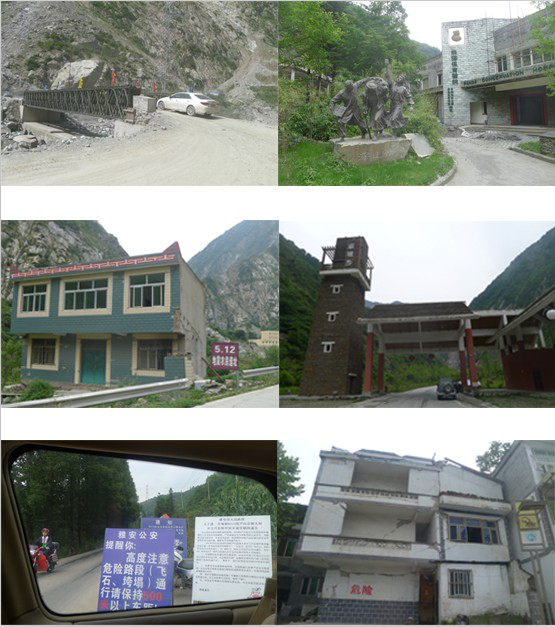Project Name: The Observation and Evaluation on the Spatial-Temporal Process of World Heritage Sites
Project Leader: Wang Xinyuan
Team Members: Yang Ruixia , Liu Chuansheng, Zhu Lanwei, Zhen Jing, Chang Chun, Liao Ying, Du Xiaocui
Project Entrusted by: the Ministry of Science and Technology
Project Period: April 2013 – December 2015
Project Overview: In progress
Project Outcomes:
The recent progress of the project lies in the collation of the results of field experiments and surveys, as shown in the following:
Analysis on the Geographical Features of Giant Panda’s Habitat
Terrain: altitude 2500 ~ 3000 m; ridge, upper and middle parts of mountain; even slope and convex slope; 6 ° ~ 30 ° slope; distance from water source > 300 m
Community structure of forest: secondary forest, and mixed broadleaf/needle leaf forest; the microenvironment is bamboo grove; average arbor height of 20 ~ 29 m; shrub coverage of 0 ~ 24%
Staple food: Fargesia; average height of 2 ~ 5 m; bamboo coverage > 50%
Landscape along the way:

Collection and Analysis of Typical Plant Spectral Information
Instrument used: SVC GER1500 Portable Spectrometer
GER1500 Portable Spectrometer is able to rapidly provide high-resolution spectral measurements whether it is used independently or connected to a laptop. Such a dual mode makes GER1500 the most widely used spectroradiometer of its kind. It only weighs 2 kg (including battery) and is easy to operate in any application. The fixed installation of all optical components of GER1500 ensures the accuracy and reproducibility of the results.
Spectral band: 281.37 - 1091.79 nm, spectral resolution of 1.5 - 2.0 nm, a total of 512 bands.
Methods of measurement
Measurement conditions: light conditions and angle of the Sun have great impact on the observation results. In order to reduce the difficulty in later processing and improve the observation accuracy, direct sunlight is required for observation. Table 1 shows the weather conditions during the observation period. Steps of measurement:
Connect GER1500 to a laptop, mainly including the connection of data cable;
Open GER1500 software on the laptop and test whether the connection is successful;
Observe whiteboard reflectance values, avoid any shadow, and lay the test whiteboard flat;
Observe the reflectance values of the observed target from 40 cm away; in case of measuring the reflectance of single leaf, keep a distance of 1 cm or less from the single leaf.
Measurement results
The spectral measurements were conducted on June 26, 27 and 28, and the measurement results are as follows:
|
Date
|
Object
|
Quantity of Samples
|
|
June 25
|
Shrub
|
16
|
|
Fargesia robusta
|
6
|
|
Bashania fangiana
|
6
|
|
Meadow
|
42
|
|
June 26
|
Needle leaf forest
|
16
|
|
Shrub
|
28
|
|
Phyllostachys viridis
|
13
|
|
June 27
|
Shrub
|
19
|
Processing of measurement results
Spectral curve characteristics of vegetation are mainly reflected in 400 nm to 1000 nm, so spectral reflectance in this range is intercepted for processing. Steps:
1. Import sig measurement results into excel to get spectral reflectance values of vegetation and reference board;
2. Import the whiteboard reflectance after re-sampling;
3. Calculate the reflectance of each wave band by using the formula: F (reflectance) = vegetation reflectance value / reference board reflectance value / hemispherical reflectance in whiteboard direction
4. Draw spectral curve by using the drawing function of excel.
The spectral curve analysis results are shown as follows:
Remarks:
(1) 冷箭竹,刚竹,拐棍竹,箭竹 Bashania fangiana,Phyllostachys viridis, Fargesia robusta, Sinarundinaria nitida
(2) 波长 Wavelength (nm)
(3) 反射率 Reflectance
iii. Major Achievements
1. Thesis
(1) Two theses are being written;
A. Impact Assessment of Earthquake on the Ecological Environment of Giant Panda’s Habitat in Ya’an
B. Ten-year Remote Sensing Dynamic Monitoring and Impact Assessment on Fengtongzhai Nature Reserve
(2) Relevant reports have been completed regarding field experiments and surveys in Sanjiang, Wolong, Caopo and Xiling Snow Mountain, major habitats of giant panda in Sichuan
2. Talent training
One Ph. D student and two Master students
